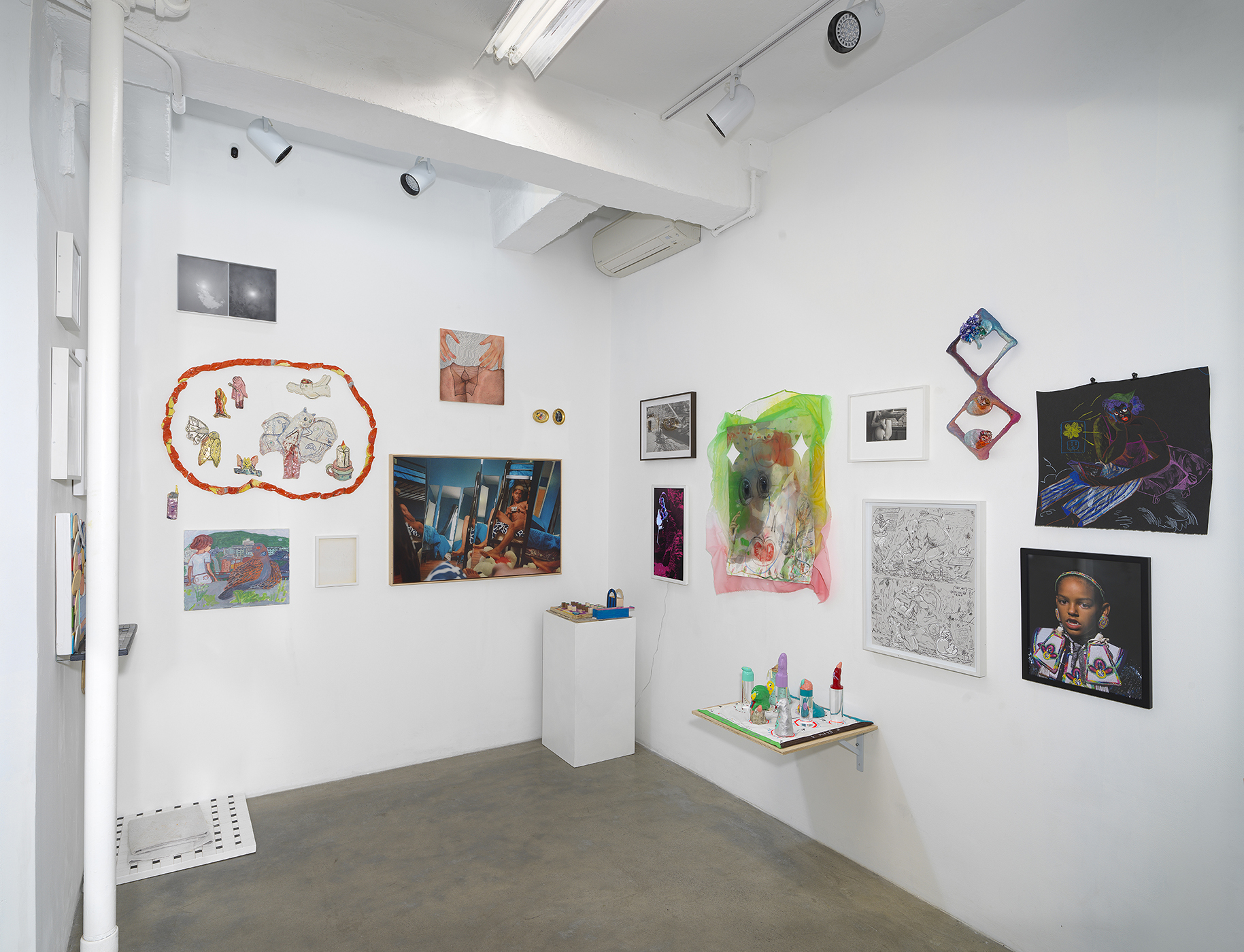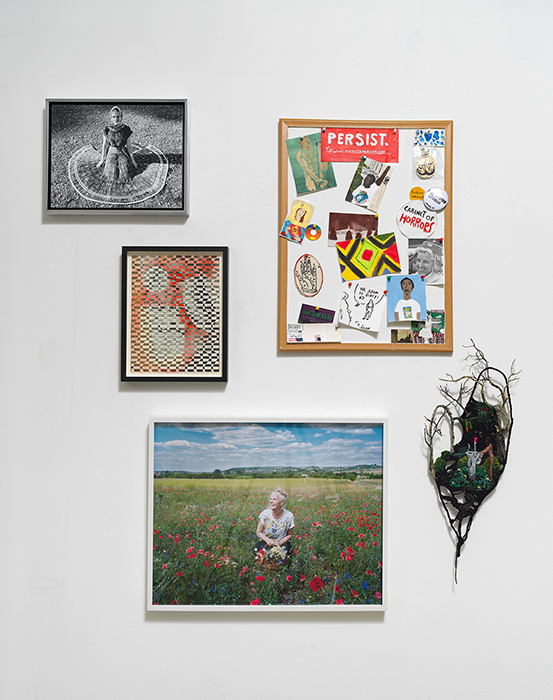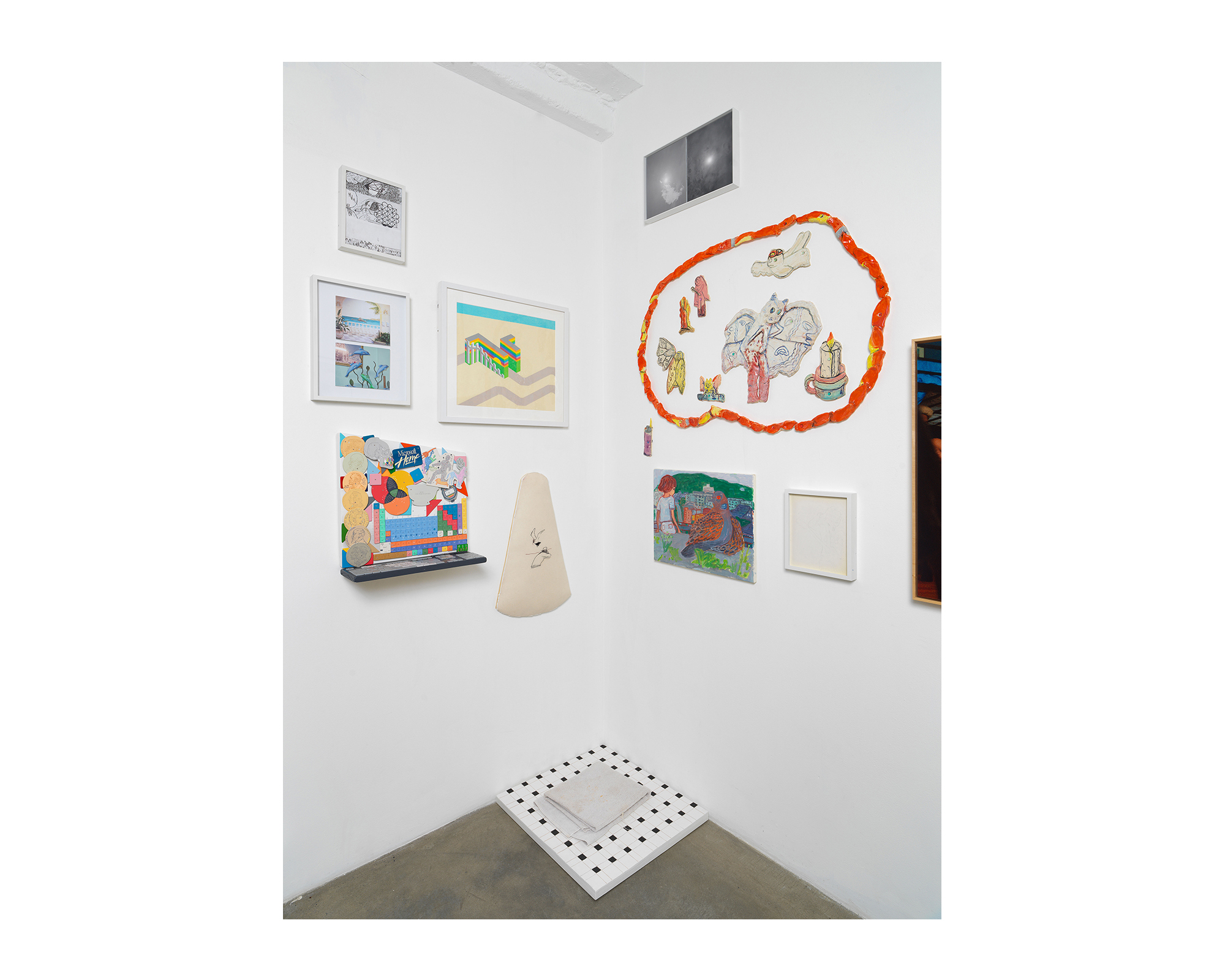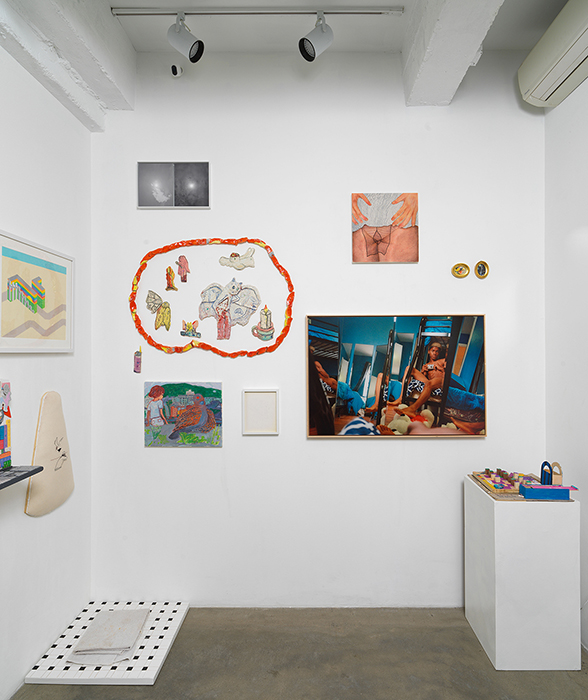Dreams as Dissent at Kristen Lorello Gallery
Filed to: review
Dreams are important to artist and curator Scott Alario. Fantasy and folklore have always played a strong role in the Providence-based photographer’s work, from his early black and white images of he and his wife and collaborator artist Marguerite Keyes exploring the landscape of parenthood through the infant imagination of their first daughter Elska, to the technicolor world of childhood and the birth of their son Marco. He captures moments of ecstasy inspired by the vivid and raw emotions that children are uniquely able to access and express, and grounds them in the ordinary, making his images feel alive and otherworldly, yet accessible and real.
Alario has always embraced collaboration, and over his career has increasingly invited his children and their intuitive playfulness into the conception and construction of his projects. Most parents would recognize a familiar feeling somewhere on the edge of chaos and bliss in his 2016 series Ecstatic Consumption, documenting these small moments of a hectic life with two young children, infused with color, magic, and joy.
In his early black and white large format work, he drew from traditional fables and fairy tales, and a desire to create quiet, beautiful dream worlds for his family to inhabit. The intensity of raising a toddler and the arrival of their second child pushed his work into full color. In a nod to the city where I first met Alario and his family over 10 years ago, he adopted the aggressive neon pallet of Providence’s Fort Thunder artists collective, combining it with the modern domesticity of a young, creative family drawing from the worlds around them, both real and unreal.
True to his vision and in step with his commitment to collaboration, this past August Alario curated the group show “Can You Dream It? (Yes I Can.)” at the Kristen Lorello Gallery in New York City. The compact and meticulously organized exhibition featured work from 30 artists working in multiple mediums. There are callbacks to Providence in the sardonic comic sketches by Mickey Zacchilli, k. funmilayo aileru’s vivid, ethereal video work, and in the show’s signature piece by Joseph Buzzell. A major influence and inspiration in his approach to art making, Alario uses Buzzell’s work as a curatorial springboard into the relentless optimism and wide-eyed imagination that makes the small show feel so much bigger.
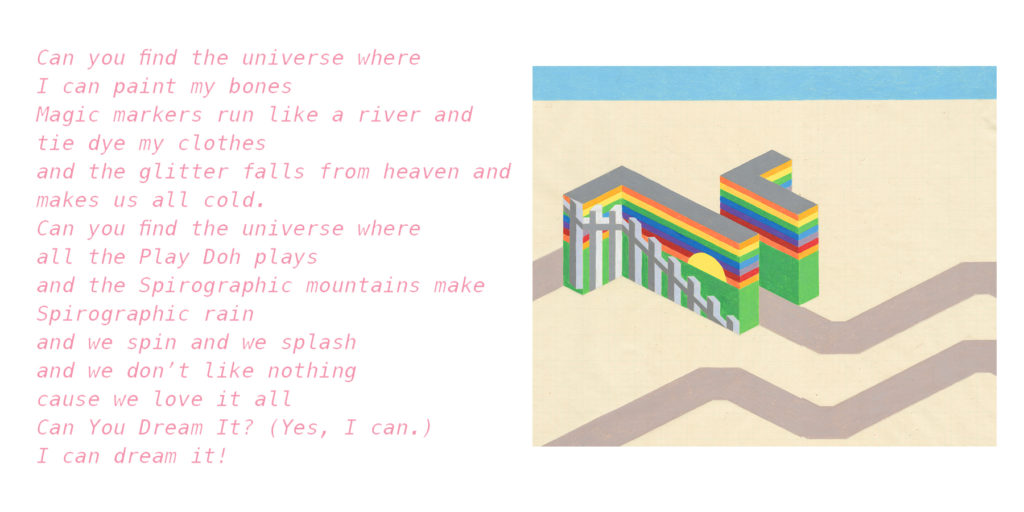
Alario’s own work has always had a subversive edge running underneath the dreamlike imagery he and his family create, and as a curator he’s built a similar fantasy – a world where the intuitive creativity of childhood reaches a critical mass, and becomes a powerful vehicle of protest. By inviting more voices into the conversation, he’s built a collective subconscious that hums throughout the show. His arrangements are deliberate and thoughtful, but never heavy handed. Spanning styles and mediums, the show never feels frazzled, and pieces like Ruby Sky Stiler’s geometric paper sculpture of woven book pages, Reka Reisinger’s gorgeous C-print of a woman gathering flowers in a vast field of blooming poppies, and RJ Supa’s political corkboard collage speak to each other on casual, but visceral level.
Alario’s own pieces in the show are nearly all collaborations, both with other artists and with his family, while an audio track from Buzzle’s Peanut Butter Kids project provides a consistency that keeps the show firmly rooted and purposeful. There is an ethereal, whimsical quality to this show, but it never floats away. ‘Can You Dream It?’, like the song the show is named for, is a rallying cry to stay playful. It encourages erratic collaboration – a “network of kinship” as Alario calls it, and sees community as our most powerful mode of protest against the politics of separation.
